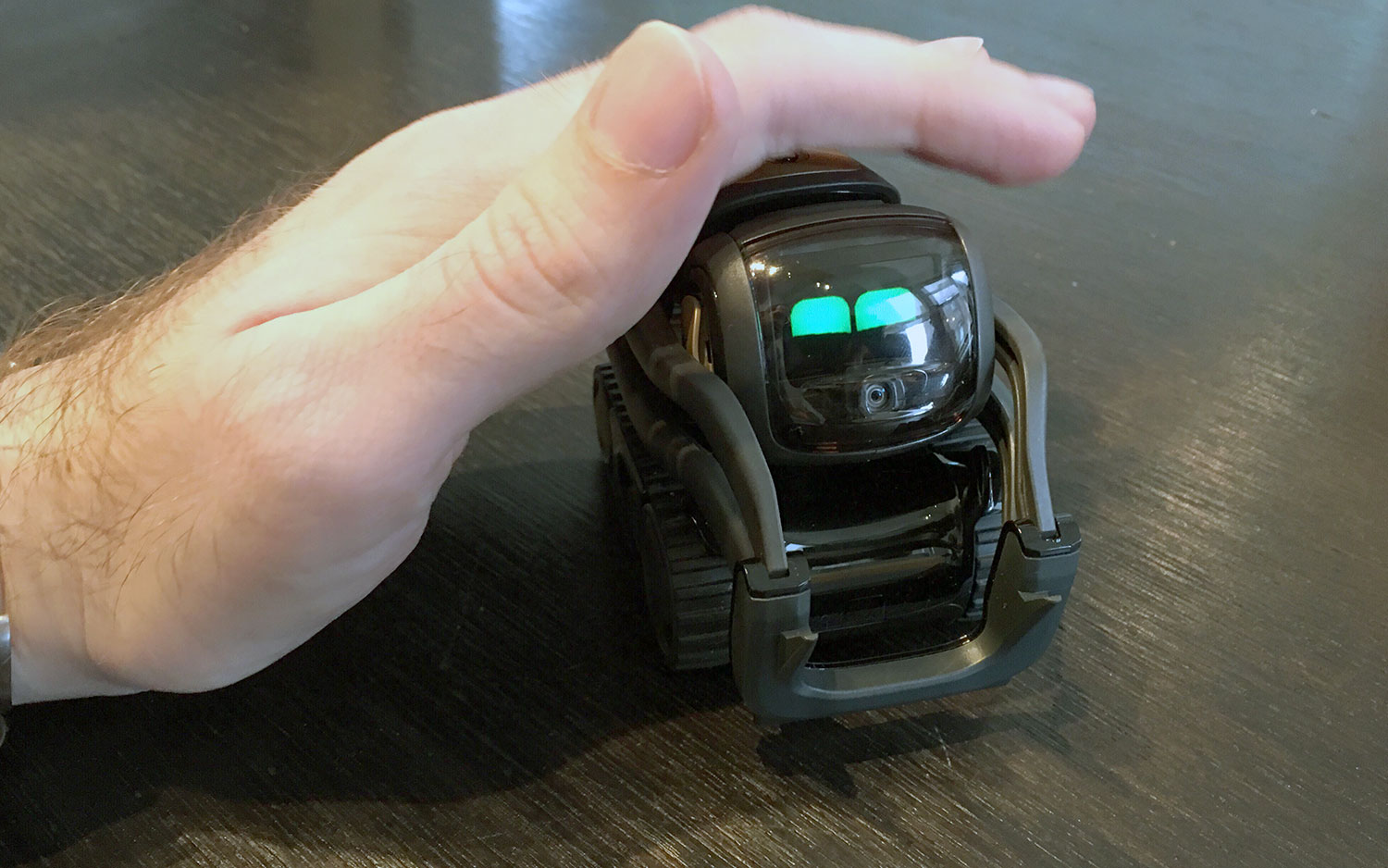Hands-On with Vector, Anki’s Robot for the Home
If you told me when I was growing up in the ‘90s that I still wouldn’t have a robot in my home in 2018, I would’ve been a mad pre-adolescent. But Anki, the creator of the Overdrive car set and educational android Cozmo has a new robot, Vector, meant to live in your home as a companion. The company is gauging interest on Kickstarter with a 30 day campaign, in which you save get a Vector for $199, as opposed to the $249 suggested retail price.
We got an early hands-on with Vector, and while its definitely impressive on a technical level, I’m just not sure what I see this doing in my home.
Vector runs on a quad-core Qualcomm processor, the APQ8009, which at 1.2GHz is far more powerful than the 100MHz ARM Cortex M4 in Cozmo. Unlike Cozmo, Vector doesn’t need to be connected to a mobile phone and instead is constantly connected to Anki’s cloud.It uses simultaneous localization and mapping with lasers to stop itself from diving off of tables and running into obstacles. It has face and voice recognition and uses AI to get to learn about each member of your family. It’s also touch-sensitive, so it knows when you’re petting it.
It has an HD camera with a 120-degree field of view and four microphones, making it better at seeing and hearing than Cozmo ever was. And while Vector will constantly connect to the cloud, audio and voice won’t be stored there, the company said.
That’s all well and good, but during my time with Vector, I saw it as a robot I could have in my house, but not a utility with a specific use case. I was able to call Vector by name (“Hey, Vector”) and introduce myself, and it used its camera to scan my face. I was also able to ask Vector to fist bump me. The thing is adorable. It’s a big, gray version of Cozmo, with wheels, a screen for a face and a tractor-style body.
But Anki has stopped short of making Vector a smart home device. Sure, you can ask it some basic questions, but it doesn’t always speak. For instance, when I asked the weather in several major cities, the robot displayed a number on its face with a cute special effect (clouds, rain, etc.). I could also use it to set a timer. But at the moment, Vector isn’t going to be controlling your lights.
Representatives from Anki told us that the company wasn't interested in making Vector work with Alexa or Google Assistant, because integrating with those services would prevent the robot from having its own, unique personality.
Get Tom's Hardware's best news and in-depth reviews, straight to your inbox.
I was also able to play Blackjack with Vector, utilizing its face-slash-display. But the cards were tiny, so it’s more of a parlor trick than a true game. And using its touch-sensors, I could pet it, which made the robot purr in happiness.
And while it has SLAM to avoid obstacles, the company suggests Vector will live on a table and not navigate your entire home or apartment. That limits how much the robot can really do in your home.
Anki suggests Vector has a ton of potential to be built upon, and I believe it. The company added a whole bunch of features to Cozmo since its launch. Its ideas for Vector include reading news, using a calendar, smart home control and serving as a security camera. There will also be an API for programmers to take full advantage of Vector's capabilities, including its camera, facial recognition and the potential to use its face as a full-color screen.
But whether Vector is worth that steep asking price is based a lot on the future. Right now, it’s still a toy, but with fewer of the experimental features its education-focused sibling, Cozmo, offers. Will having a robot in the home be as cool as I hoped as a kid? We’ll see when the final product releases in October.

Andrew E. Freedman is a senior editor at Tom's Hardware focusing on laptops, desktops and gaming. He also keeps up with the latest news. A lover of all things gaming and tech, his previous work has shown up in Tom's Guide, Laptop Mag, Kotaku, PCMag and Complex, among others. Follow him on Threads @FreedmanAE and BlueSky @andrewfreedman.net. You can send him tips on Signal: andrewfreedman.01

